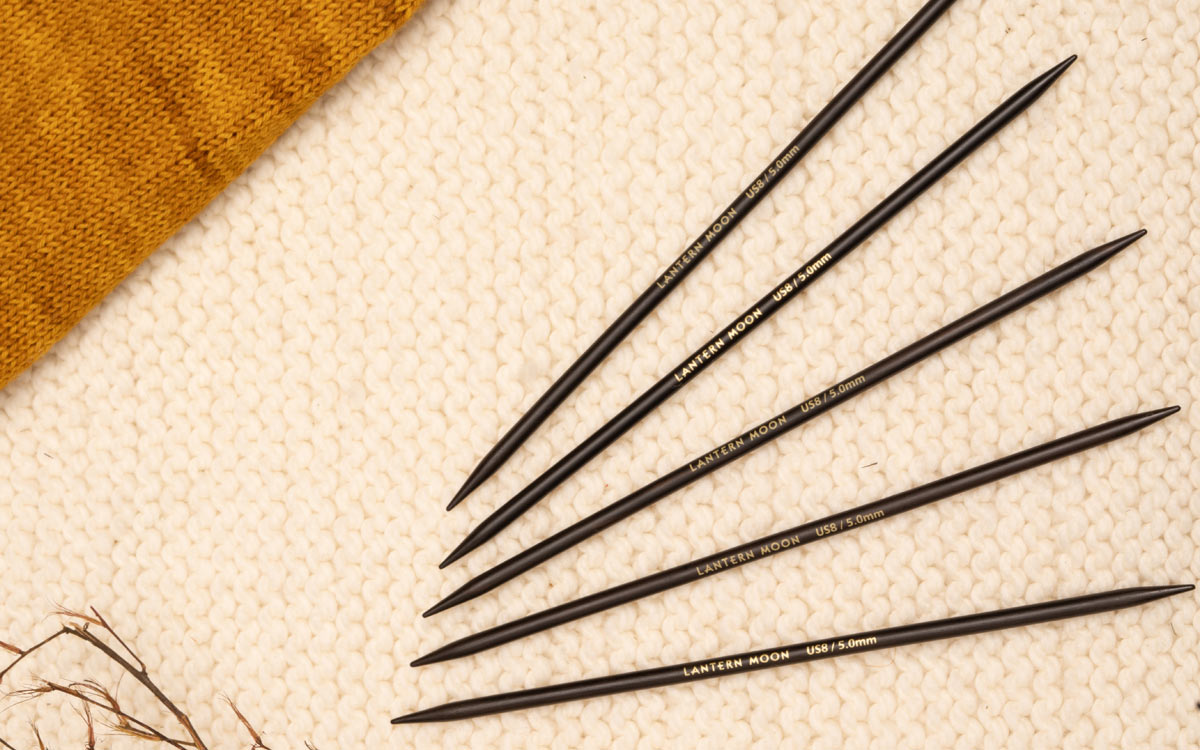
Left-handed knitters are important because they contribute to the diversity of the knitting community and offer a different perspective on the craft. As beginners, they face challenges when it comes to knitting instructions and patterns, as most of them are written for right-handed people, but over time, they master their knitting needles. You knit with both hands, so it does not matter whether your dominant hand is left or right. You can quickly master knitting with time and practice. In this blog, we’ll walk you through knitting left-handed.
You need to start with regular knitting needles and yarn. These tools and accessories do not need to be customized for your different hand usage. You start to learn the basics of any pair of single-pointed needles. Once you gain experience, you are introduced to circular knitting, fixed or interchangeable double-pointed needles.
How is Left-handed Knitting different from Right-handed Knitting?
Knitting requires both hands, but when you work with the dominant knitting needle on the left hand instead of the right, you can change the direction of the stitches. Your stitches grow on the needle that is your dominant hand, while the other steps are almost as it is. You start by casting on stitches and following the pattern of knit or purl stitches and other techniques. Left-handed knitters typically hold the working needle in their left hand and the other in their right hand. At the same time, right-handed crafters do the opposite. It is also worth noting that left-handed knitters often learn to work with the right hand as they adapt the skills from their mentors. Later, they become a part of the community as regular knitters, never showing their different dominant hand. This can quickly be done with a beginner and primarily young crafters.
The tricky difference comes when following a stitch pattern written for right-handed knitters. Here, the left-handed knitters have to adapt the pattern and decode the instructions accordingly. These translations of knitting instructions are mainly applied to shaping instructions, colorwork, or lace patterns to achieve the desired outcome. Make notes when going through the pattern instructions so that you have already completed your research when you work on the project.
Here's a step-by-step tutorial to help you get started with left-handed knitting:
Casting On
Hold the working knitting needle with your left hand and the yarn tail with your right hand. Make a slipknot and place it on the left needle.
There are many ways to cast on stitches, such as a long tail, knitted, thumb, and many more. The basic trick is to make loops on the knitting needle that sets the foundation of the project and you will work in the coming rows or rounds as instructed in a pattern.
Knit Stitch
Insert the needle into the first stitch from left to right. Wrap the yarn counterclockwise around the working needle tip. Pull the needle through the stitch, bringing the new loop through to the front. Slip the old stitch off the needle, forming a new stitch. Repeat these steps for each stitch across the row or round.
Purl Stitch
Insert the needle into the stitch from right to left. Wrap the yarn counterclockwise around the working needle. Pull the needle through the stitch, bringing the new loop to the back. Slip the loop of the needle, forming a new stitch. Repeat these steps for each stitch across the row or round.
Binding Off
Similar to cast-on techniques, there are multiple methods to bind off stitches in knitting. You take the stitches off the knitting needle and finish the project. Though this row or round is not counted in the pattern, you follow the pattern of making knit or purl stitches but with two stitches at one time.
Continue this process until you have one stitch remaining, and then cut the yarn, leaving a tail. Pull the tail through the last stitch to secure it.
Weaving in Ends
Use a finishing needle to weave the yarn ends into the fabric, ensuring they are secure and not visible on the right side of the knitting.
This tutorial lets left-handed knitters achieve the same beautiful results as right-handed knitters. It is easy to start making patterns and projects with time and practice.
Before you dive deep into a project, a few tips to learn knitting for left-handed knitters are:
Tip 1 - Experiment with different Knitting Styles
Knitting styles can make a big difference in how comfortable and fast you can knit. Many experienced knitters in the community believe that the Continental knitting style is convenient for left-handed knitters. This is basically because the yarn is held in the left hand, giving more freedom to move needles. But, as we discussed above, ultimately, it depends on you as a knitter on what suits your preference. Our previous blog on English versus Continental knitting will help you decide.

Tip 2 - Choose Knitting Needles to Fit Your Preferences
Left-handed knitters may find it beneficial to work with circular knitting needles. As the needles carry the weight of the project on the cords, it keep your hands free from fatigue and stress. Also, you can work on multiple projects as you can knit back and forth and in the round with the same pair of circular needles.
Also, working with knitting accessories such as stitch markers is good practice as you can divide your knitting into sections, mark stitches for reference, and get help with keeping a count of your stitches.
Tip 3 - Knit in front of a Mirror
Left-handed knitters will find it much more convenient to knit in front of a mirror at the beginning. When you observe your hand movements in the mirror, you understand the knit and purl stitch formation you get. This is also particularly helpful when working on a new stitch pattern or technique. A mirror will help you gain perspective with your knitting, especially if you are teaching yourself through online sources.
Tip 4 - Join a Left-Handed Knitting Community
Connecting with a left-handed knitter or a community will genuinely help in mastering skills. You can get help in any situation, tips, and insights into techniques and patterns. Also, with a community, you will always feel encouraged at particular testing times. You can check out online forums and social media groups if you are still looking for a group such as where you reside. Many classes and tutorials will guide you through any challenges you face.
As with any skill, practice and patience are essential qualities. Knitting is a beautiful experience, and with the Lantern Moon collection, you can truly enjoy one whenever you pick up the knitting needles. Handcrafted by skilled artisans, the knitting needles have the mark of craftsmanship passed on through generations. The premium knitting needles are made from precious ebony wood in options of single-pointed, double-pointed, fixed circulars and interchangeable needles and sets.
